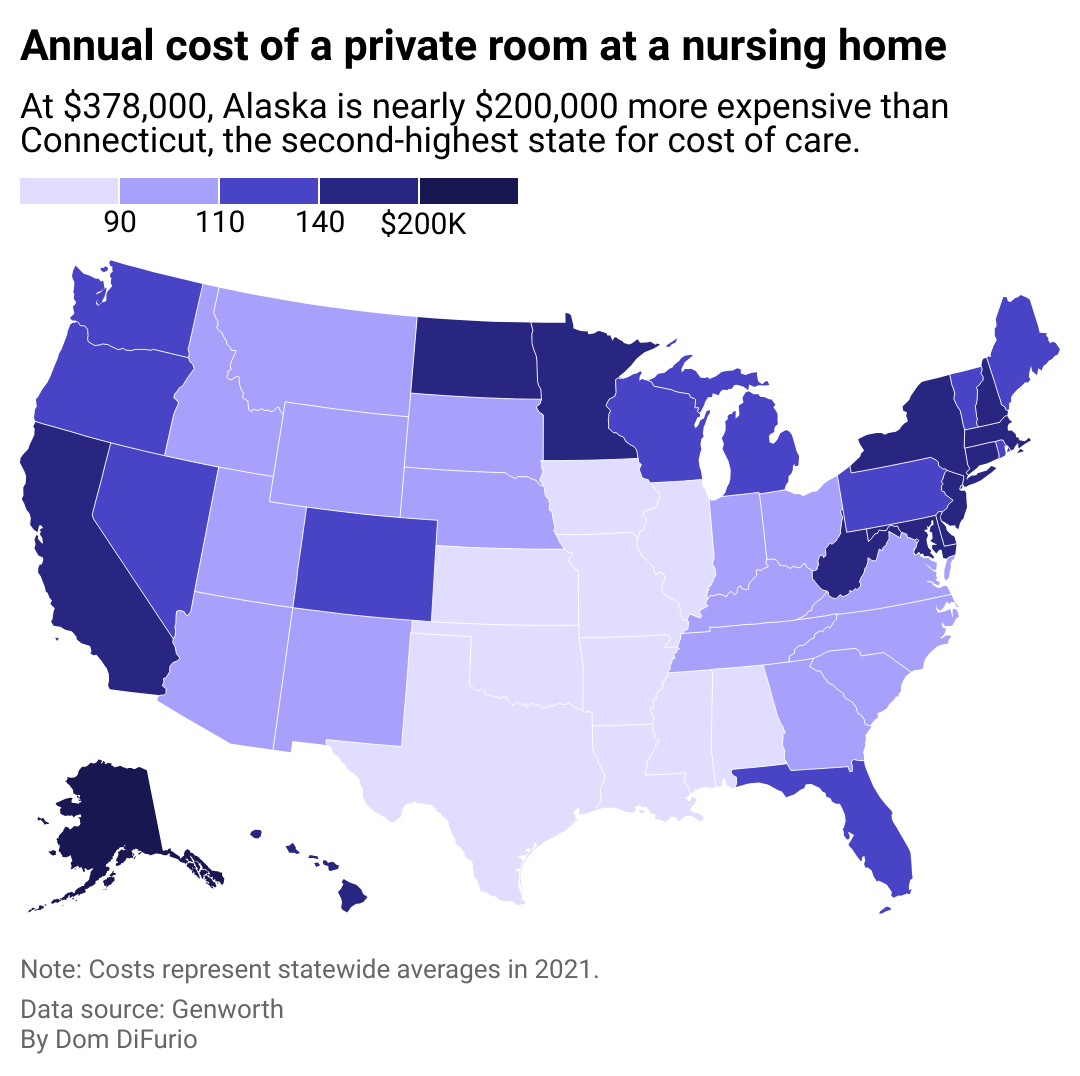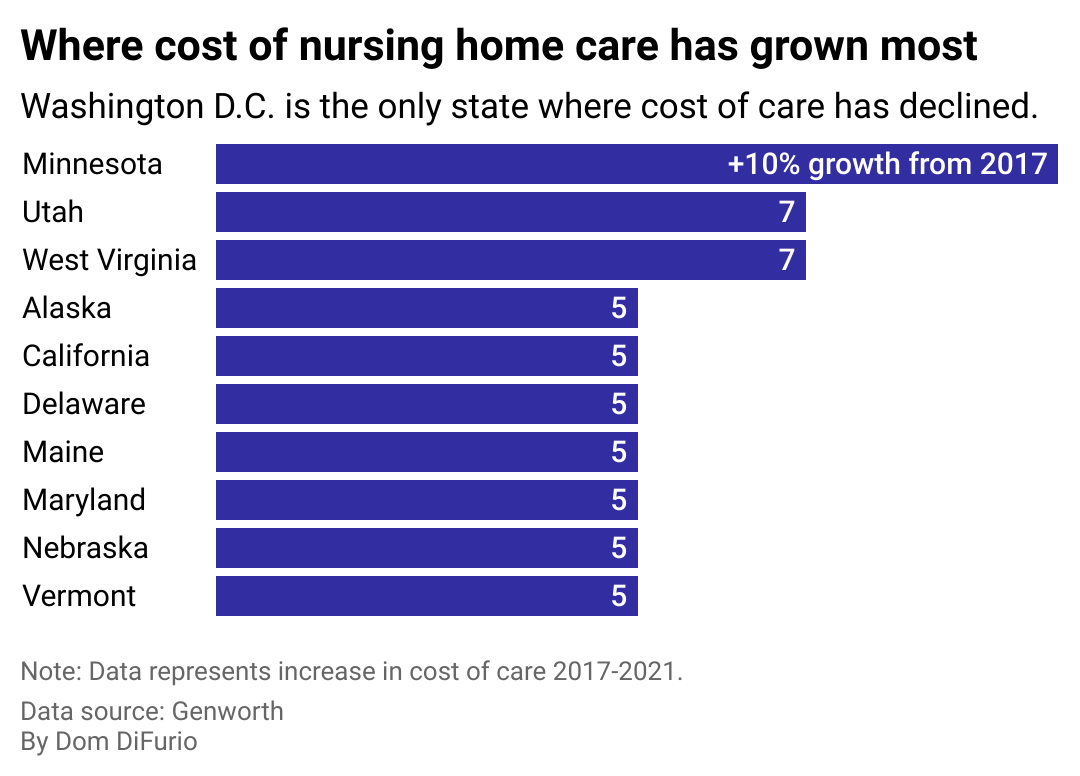
This story originally appeared on QMedic and was produced and distributed in partnership with Stacker Studio.
The most expensive states for nursing home care
Most Americans over the age of 65 will require some sort of long-term care in their later lives. About 1 in 3 will require the costliest kind of care—that of a skilled nursing home facility.
QMedic analyzed data from long-term care insurance firm Genworth to illustrate how the cost of nursing home care has grown in recent years and where it stands around the country.
The average cost for one year of care at a skilled nursing home facility was $108,405 in 2021, according to the latest estimates available from Genworth. It's a figure that's grown more than 3% since 2017 and doesn't include the impact of record inflation since then.
In-home care, demand for which has boomed over the past decade, and assisted living facilities provide long-term care options for older adults at a lower cost on average compared to nursing home care. The national average cost of in-home care for a year of services from a home health aide runs around $62,000, according to Genworth. A private bedroom in an assisted living facility costs around $54,000 on average.
But for older adults, an injury from a fall or worsening cognitive issues can be the catalyst for needing more care from professionals. Nursing homes, while pricey, can help with around-the-clock services, including daily hygiene, mobility, and eating. People who develop Alzheimer's disease and other forms of dementia also require the kind of intensive care nursing homes can provide.
It's impossible for someone to know whether they'll need to pay for an extended stay in a nursing home. Medicaid often doesn't cover the full cost of long-term care. In some states, the cost of any significant stay in a nursing home can be financially unfeasible for many older middle-income adults.

Costs for nursing home care can run into six figures depending on where you live
Alaska ranks on the extreme end for the costs of providing a year's worth of nursing home care for someone over 65. The state's rural topography, small population, and labor force, coupled with its isolation, mean that care can be incredibly expensive, a problem that has plagued the state for years. The island state of Hawaii is experiencing lengthening wait list times for its long-term care facilities as it faces a similar shortage of care professionals.
Some states, like Texas, have approved state-level increases to Medicaid funding in the wake of the COVID-19 pandemic that would help close the gap between what insurance covers and what older adults must pay for out of pocket. Nursing home organizations also say increasing Medicaid funding helps increase the compensation they can provide for care, a step they argue is necessary for addressing the long-term care labor shortage.

COVID-19 and inflation push costs higher in some states than others
Nationwide costs for nursing home care grew slightly more than 3% on average, but some states saw an even higher rise.
The cost increases were most heavily affected by difficulty finding enough professionals to meet the demand for care. It's a trend exacerbated by the rising costs of living and nurses' ability to earn more in other health care settings, like travel nursing. Minnesota, Utah, and West Virginia stand out as states where the cost of a year of nursing home care has grown at nearly twice the average rate.
The outlook for the cost of care nationwide could worsen over the next decade as calls for federal and state-level solutions continue. Demand for nurse professionals and nursing home care is expected to explode over the next six years with the Census Bureau forecasting the entire baby boomer generation will be aged 65 or older by 2030.
Story editing by Ashleigh Graf. Copy editing by Paris Close. Photo selection by Lacy Kerrick.



